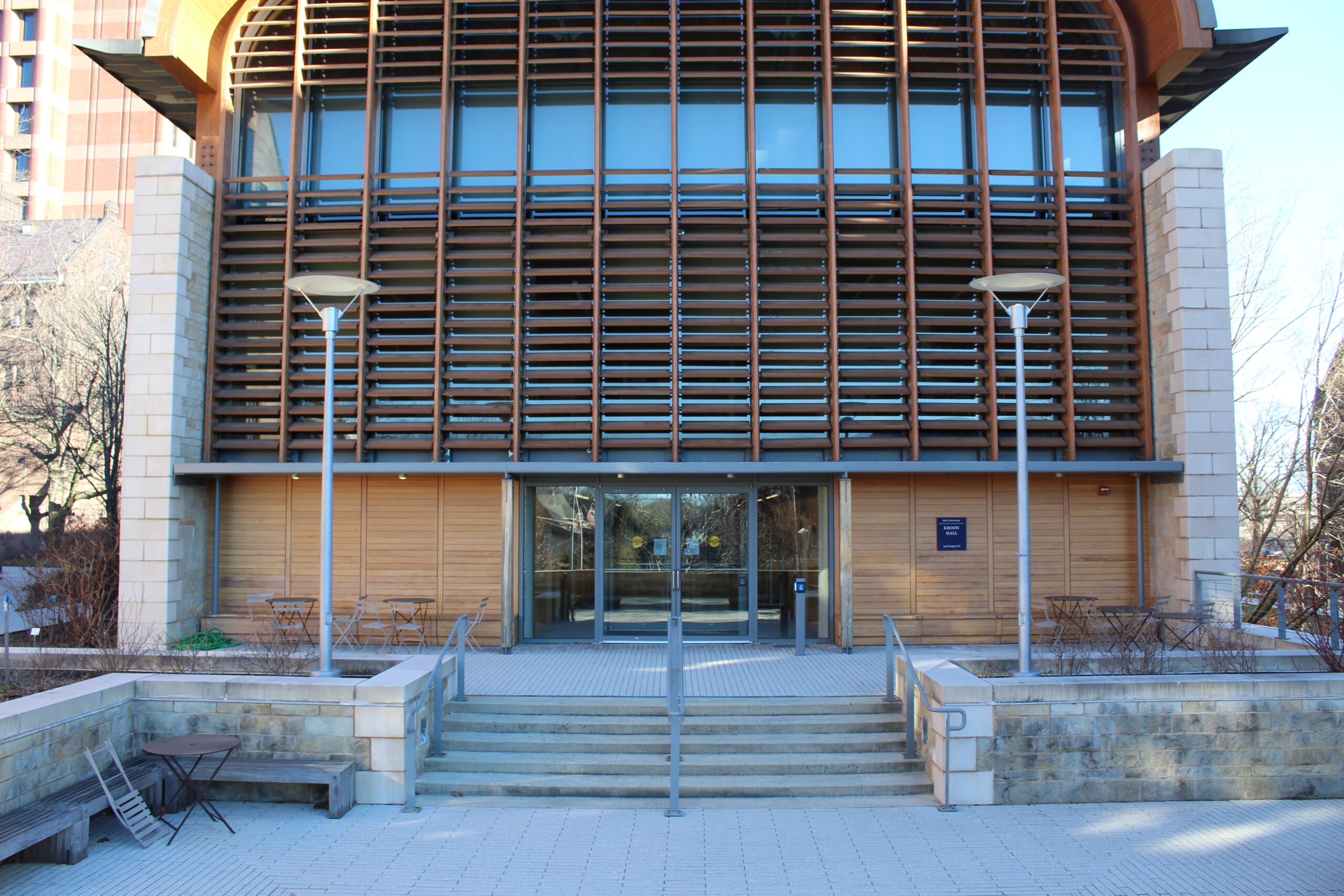How New Haven grapples with climate change
Flooding and extreme heat pose risks for New Haven as the environment warms.

Paul-Alexander Lejas, Staff Photographer
The destructive Los Angeles wildfires have demonstrated how climate change can impact urban life abruptly and significantly. In New Haven, flooding and storm surges have become a primary concern.
While New Haven is not likely to see any weather as extreme or destructive as the wildfires, the rising sea level is increasing the likelihood of surge flooding. New Haven also faces potential extreme heat, along with the general threat of greenhouse emissions. To be prepared, the local and state governments must ensure that building, infrastructure and policy regulations are up to date.
“With climate change, the probability [of extreme weather] increases, so we have to think about this and just be a little bit better prepared than we are,” professor of Ocean and Atmospheric Sciences Alexey Fedorov said.
However, Fedorov believes that natural weather variations can still be drastic, and are not the result of climate change. These natural variations are still the general reason for everyday changes in the weather.
Regardless, in respect to climate change, New Haven should be wary of the rising sea levels, which can lead to far more dangerous storm surges — abnormal rises in sea levels caused by storms.
“If you have already high sea levels, a storm surge can do much more damage,” Fedorov said. “We have flooding penetrating much further inland, and so that’s probably one of the critical things to think about in terms of global warming for New Haven and generally this area of Connecticut.”
According to David Kooris, a lecturer at the School of the Environment and the Executive Director of the Connecticut Municipal Redevelopment Authority, dangerous flooding is a related issue that faces New Haven. It is important that the city is able to upgrade and invest in the necessary infrastructure to contain flood water, including culverts and bioswales. Culverts carry river water underneath roads and can burst in floods if they are not wide enough, while bioswales are patches of planted land that hold water before they enter drainage systems, reducing the likelihood of overflow during a flood.
Kooris also mentioned a project funded by the Army Corp of Engineers to use I-95 as a flood wall to reduce the risk of flooding in the area. Furthermore, municipalities should think of how to ensure safe future development in a world impacted by climate change, according to Kooris.
“The state is constantly updating its building codes, raising the bar for municipalities, so that their floodplain regulations and coastal zone management regulations are constantly raising the bar for future development,” Kooris said.
Extreme heat is another concern in New Haven, where the urban climate increases its effect.
Kooris believes that having concentrations of pavement and other surfaces absorb heat can mitigate its risks, along with planting more trees, which provide shade and also absorb some heat.
“About having adaptation measures for the neighborhood,” Kooris said, “[it’s important to have] splash pads and ways for kids to engage with water and cool down.”
Creating government policy can be helpful in fighting climate change as well, including through reducing greenhouse gas emissions.
Suprya Sarkar is Chair of the Outreach Committee of the New Haven Climate Movement. During summer 2024, Sarkar and other members of the Climate Movement drafted the Transportation Transformation Resolution for the New Haven city government.
“The resolution is essentially focusing more on greenhouse gas reduction in the transportation sector as it is the number one contributor to emissions in the state,” Sarkar said. “We tried to incorporate demands such as increased funding for sustainable urban development, climate education planning, staffing, and greater access to public transportation.”
For Sarkar, it is meaningful to have her voice heard, and she hopes her actions will bring about meaningful political change that will help curb the impact of greenhouse gas emissions on New Haven.
Since 1901, the global average temperature has risen by about 0.17°F per decade.







